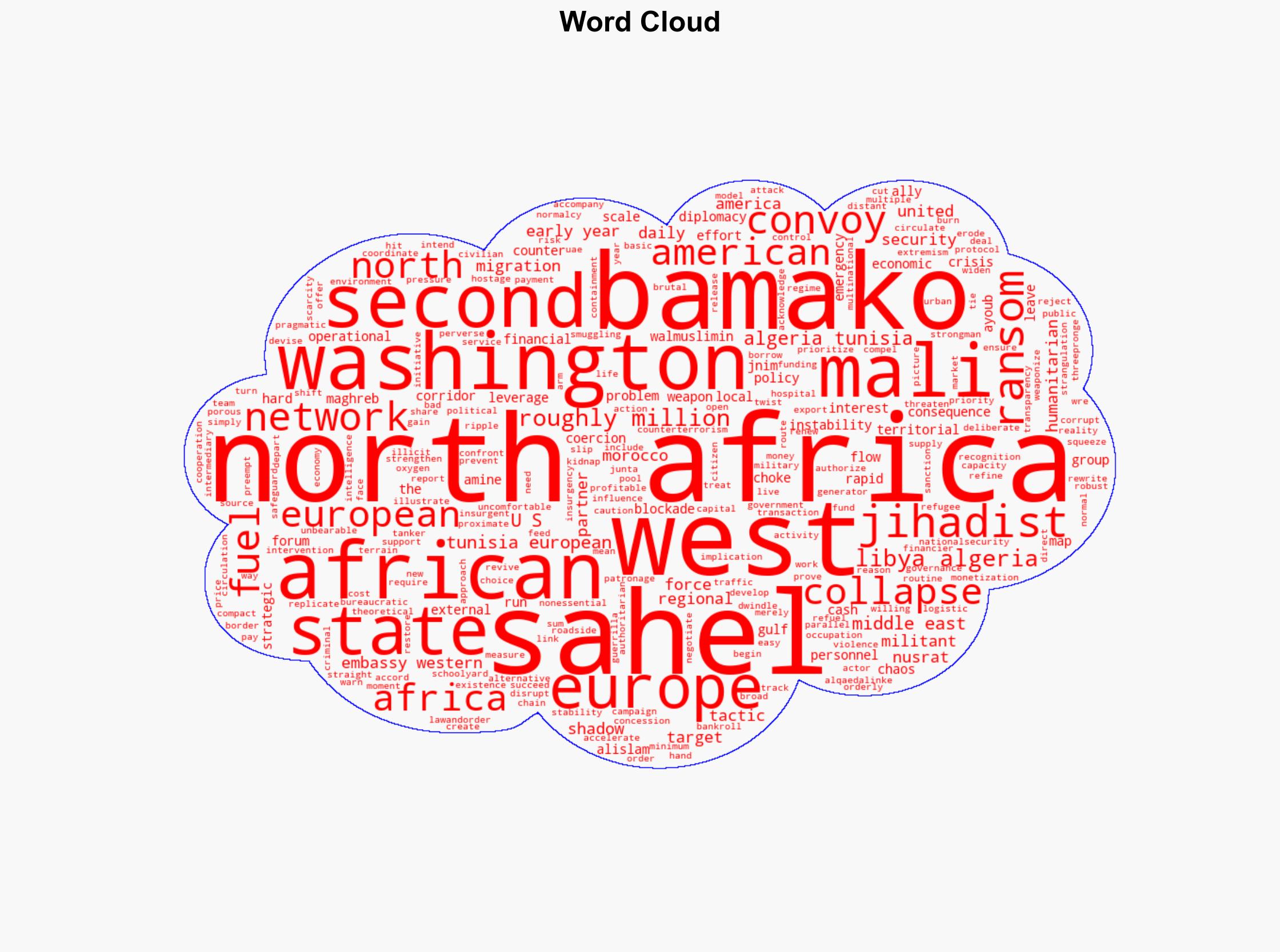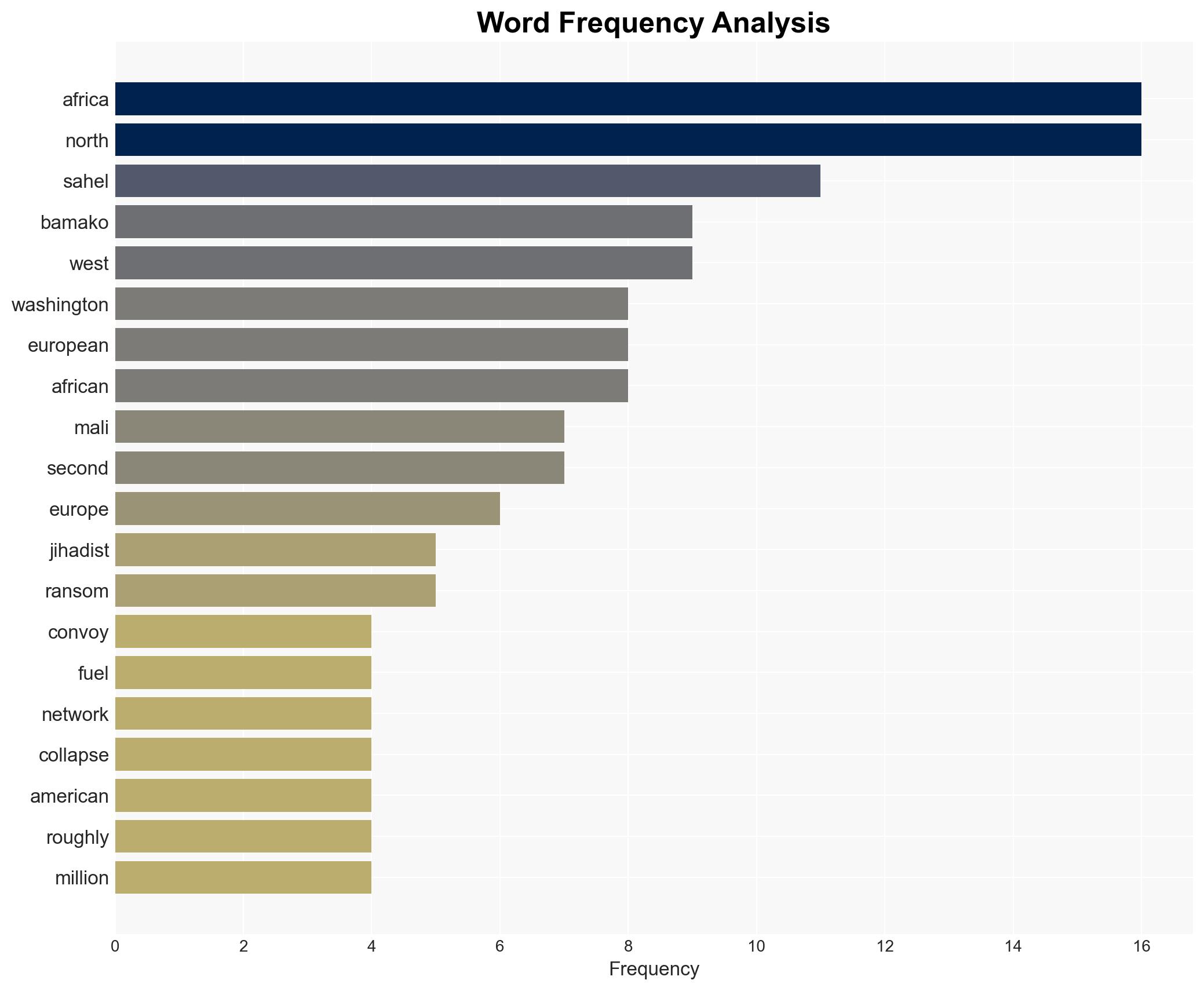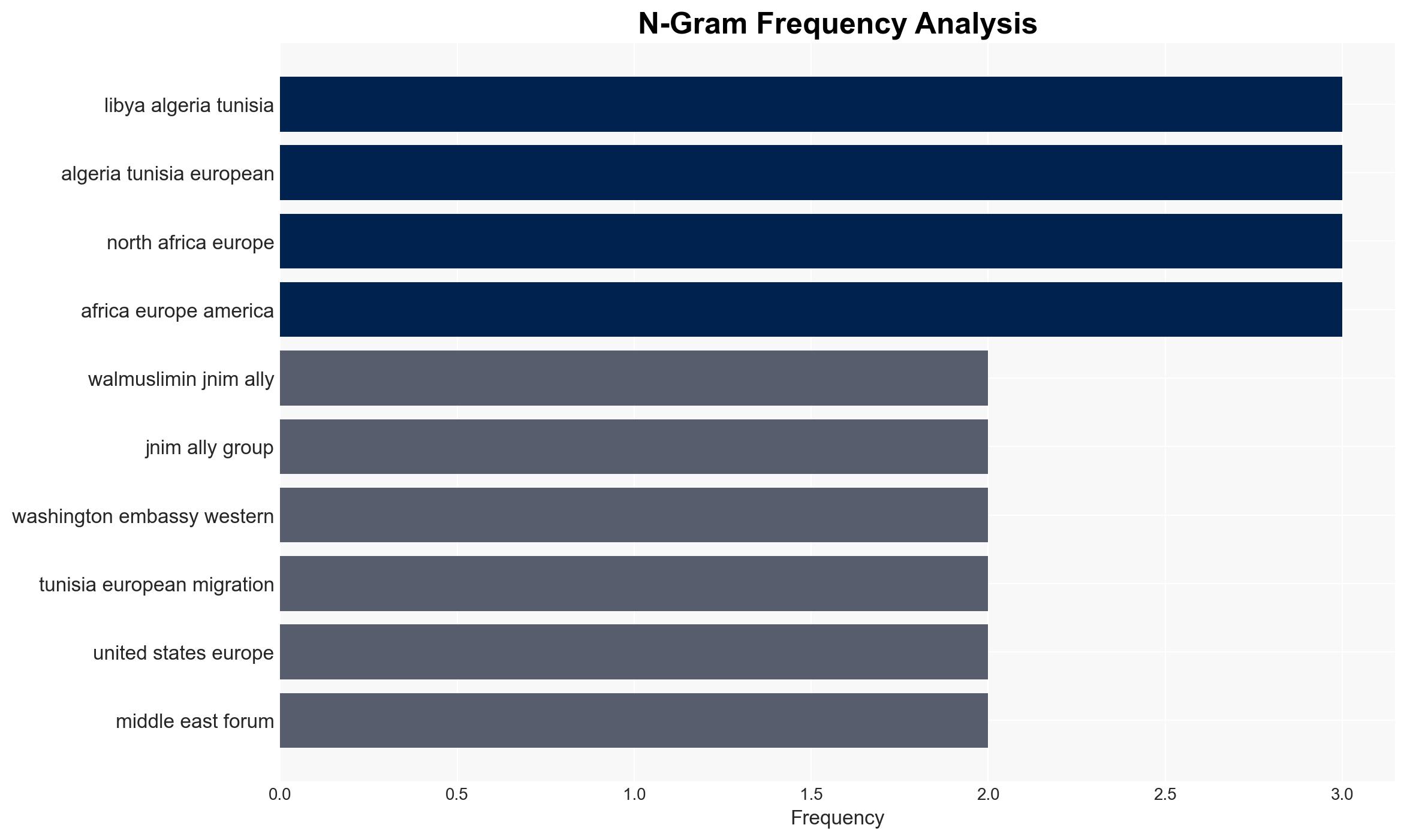Malis fuel blockade Is a regional time bomb – and a direct threat to American interests
Published on: 2025-11-22
AI-powered OSINT brief from verified open sources. Automated NLP signal extraction with human verification. See our Methodology and Why WorldWideWatchers.
Intelligence Report:
1. BLUF (Bottom Line Up Front)
The fuel blockade in Mali poses a significant threat to regional stability and American interests, with a high likelihood of escalating into a broader security crisis. The most supported hypothesis is that the blockade is a deliberate strategy by jihadist groups to destabilize the region, leveraging economic strangulation to gain influence. Recommended actions include enhancing intelligence sharing, disrupting financial flows to jihadists, and establishing humanitarian corridors to mitigate the crisis. Confidence Level: High.
2. Competing Hypotheses
Hypothesis 1: The fuel blockade is a strategic maneuver by jihadist groups, such as Nusrat al-Islam wal-Muslimin (JNIM), to destabilize Mali and expand their influence in West Africa. This hypothesis is supported by evidence of targeted attacks on fuel convoys and the use of economic strangulation as a tactic to erode public support for the junta.
Hypothesis 2: The blockade is primarily driven by criminal networks seeking to monetize instability through ransom payments and trafficking of illicit goods. This hypothesis considers the broader criminal monetization of the crisis and the involvement of various actors in the region.
Assessment: Hypothesis 1 is more likely given the strategic nature of the attacks and the historical patterns of jihadist operations in the region. However, elements of Hypothesis 2 are also present, indicating a complex interplay between ideological and criminal motivations.
3. Key Assumptions and Red Flags
Assumptions: It is assumed that jihadist groups have the capability and intent to sustain the blockade. Another assumption is that regional governments lack the capacity to effectively counter these tactics without external support.
Red Flags: The withdrawal of European forces and reduced international presence may embolden jihadist groups. Additionally, the potential for misinformation campaigns to exacerbate tensions should be monitored.
4. Implications and Strategic Risks
The blockade could lead to a humanitarian crisis, further destabilizing Mali and potentially spilling over into neighboring countries. This may result in increased migration pressures on North African and European borders. The erosion of state authority could also create a vacuum for extremist groups to exploit, posing a direct threat to regional and international security.
5. Recommendations and Outlook
- Enhance intelligence sharing and operational ties with regional partners to track smuggling networks and disrupt financial flows to jihadists.
- Coordinate with Gulf partners to develop protocols for ransom negotiations and ensure transparency in financial transactions.
- Establish emergency fuel corridors and safeguard multinational convoys to prevent urban collapse and maintain basic services.
- Outlook: Best-case scenario involves successful international cooperation leading to stabilization. Worst-case scenario sees the collapse of Mali’s government and a regional security crisis. The most likely scenario involves a protracted conflict with intermittent international interventions.
6. Key Individuals and Entities
Nusrat al-Islam wal-Muslimin (JNIM) – Jihadist group involved in the blockade.
Local junta forces – Mali’s government forces struggling to maintain control.
7. Thematic Tags
Cybersecurity, Regional Stability, Counterterrorism, Humanitarian Crisis, Economic Strangulation
Structured Analytic Techniques Applied
- Adversarial Threat Simulation: Model and simulate actions of cyber adversaries to anticipate vulnerabilities and improve resilience.
- Indicators Development: Detect and monitor behavioral or technical anomalies across systems for early threat detection.
- Bayesian Scenario Modeling: Quantify uncertainty and predict cyberattack pathways using probabilistic inference.
- Network Influence Mapping: Map influence relationships to assess actor impact.
- Narrative Pattern Analysis: Deconstruct and track propaganda or influence narratives.
Explore more:
Cybersecurity Briefs ·
Daily Summary ·
Support us





